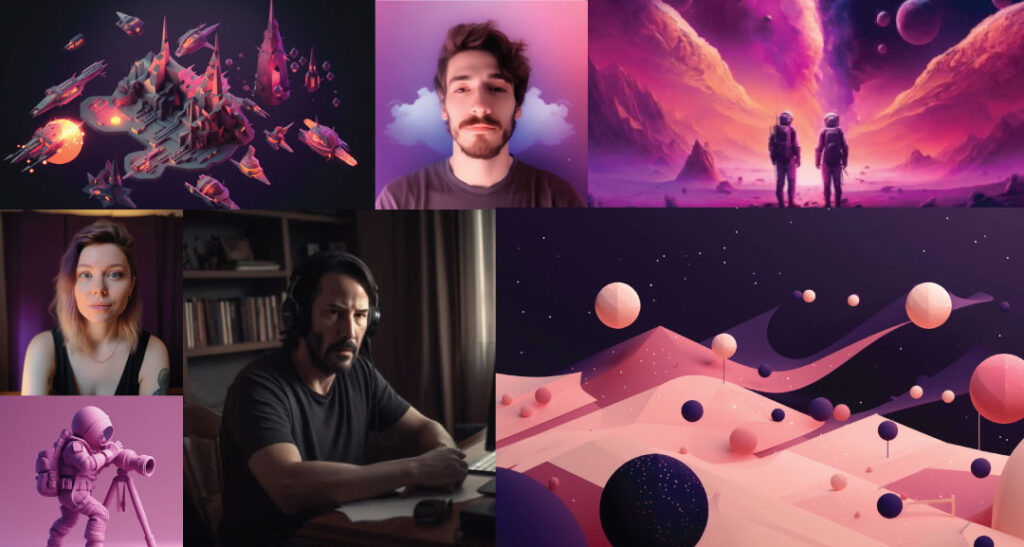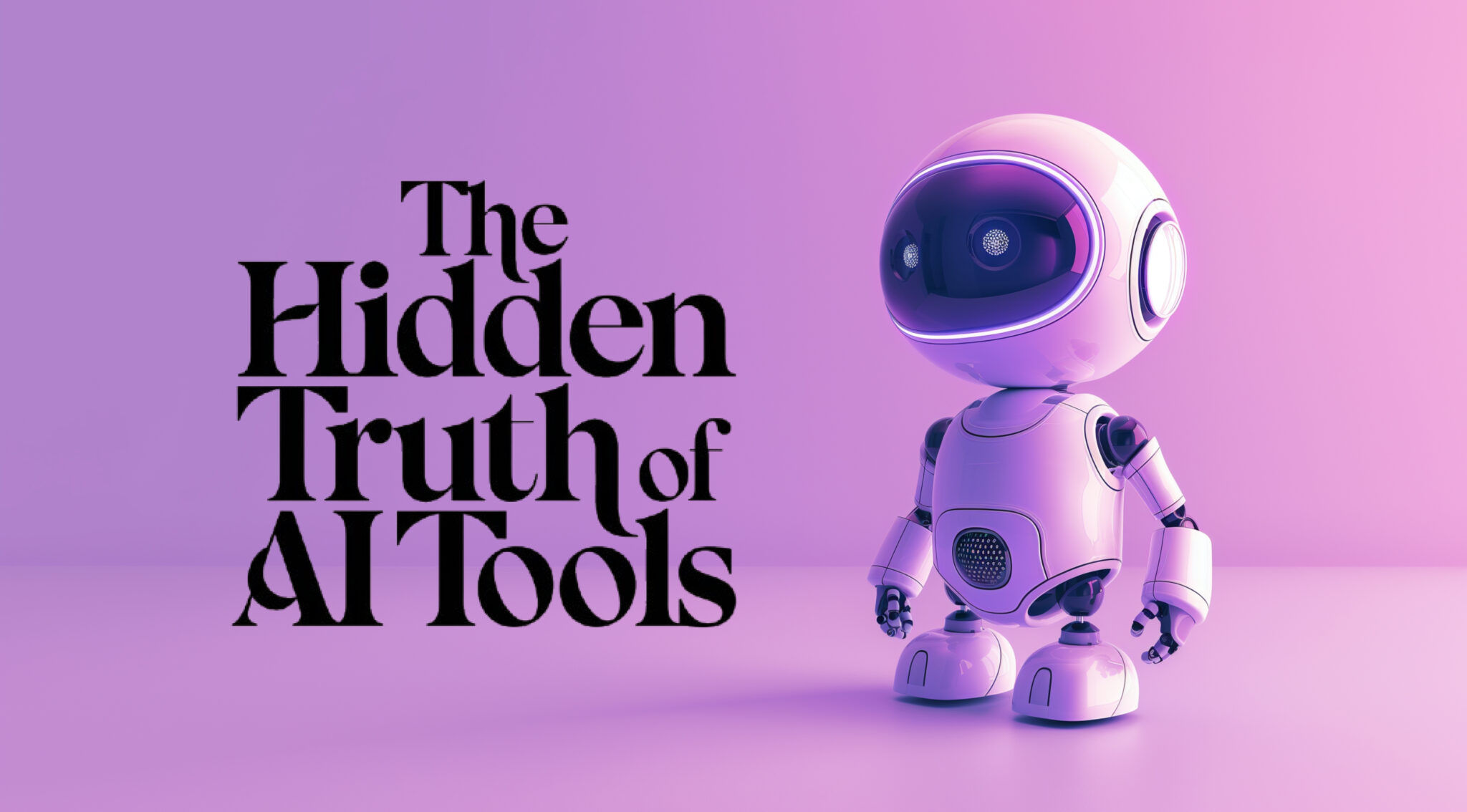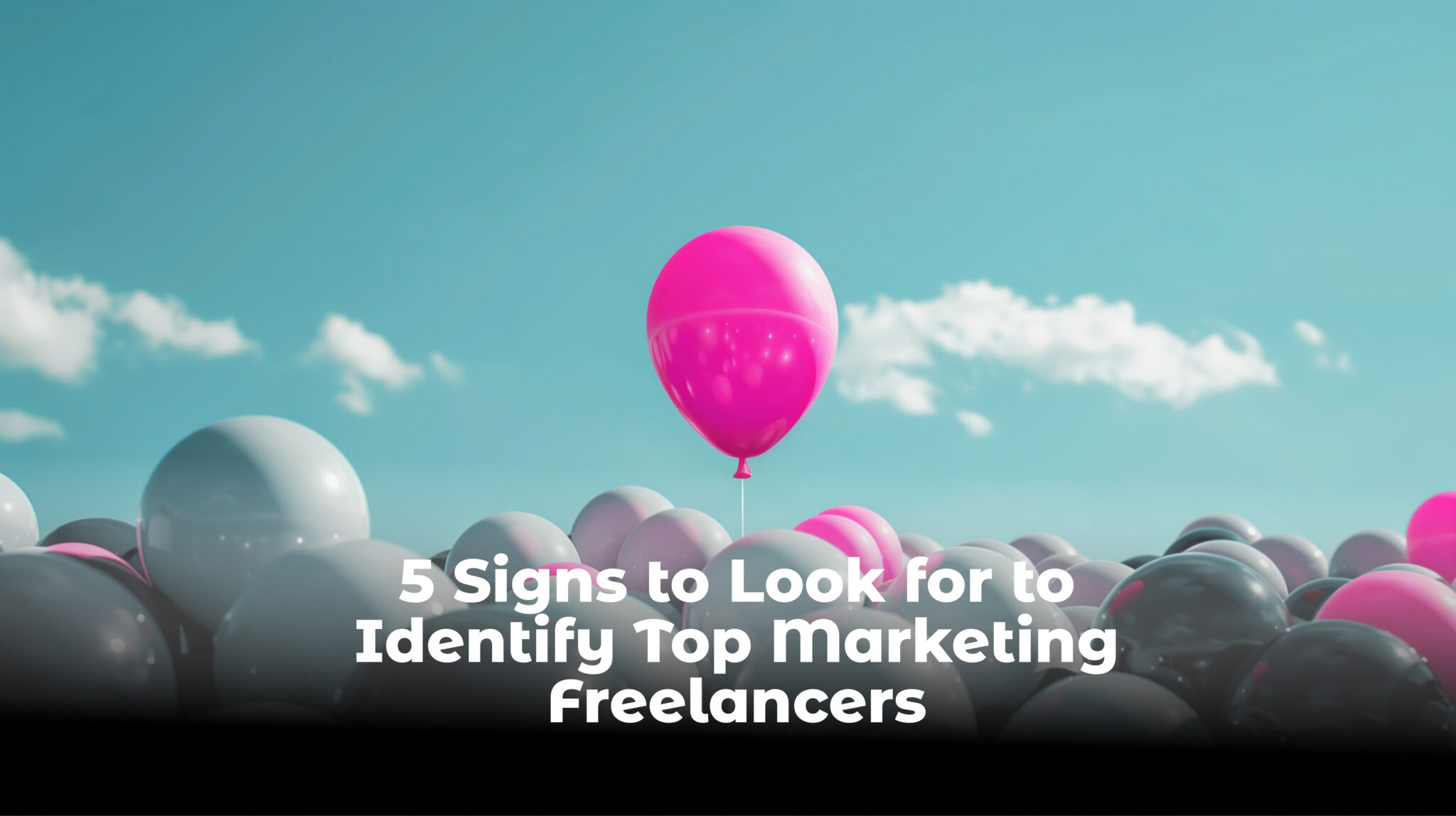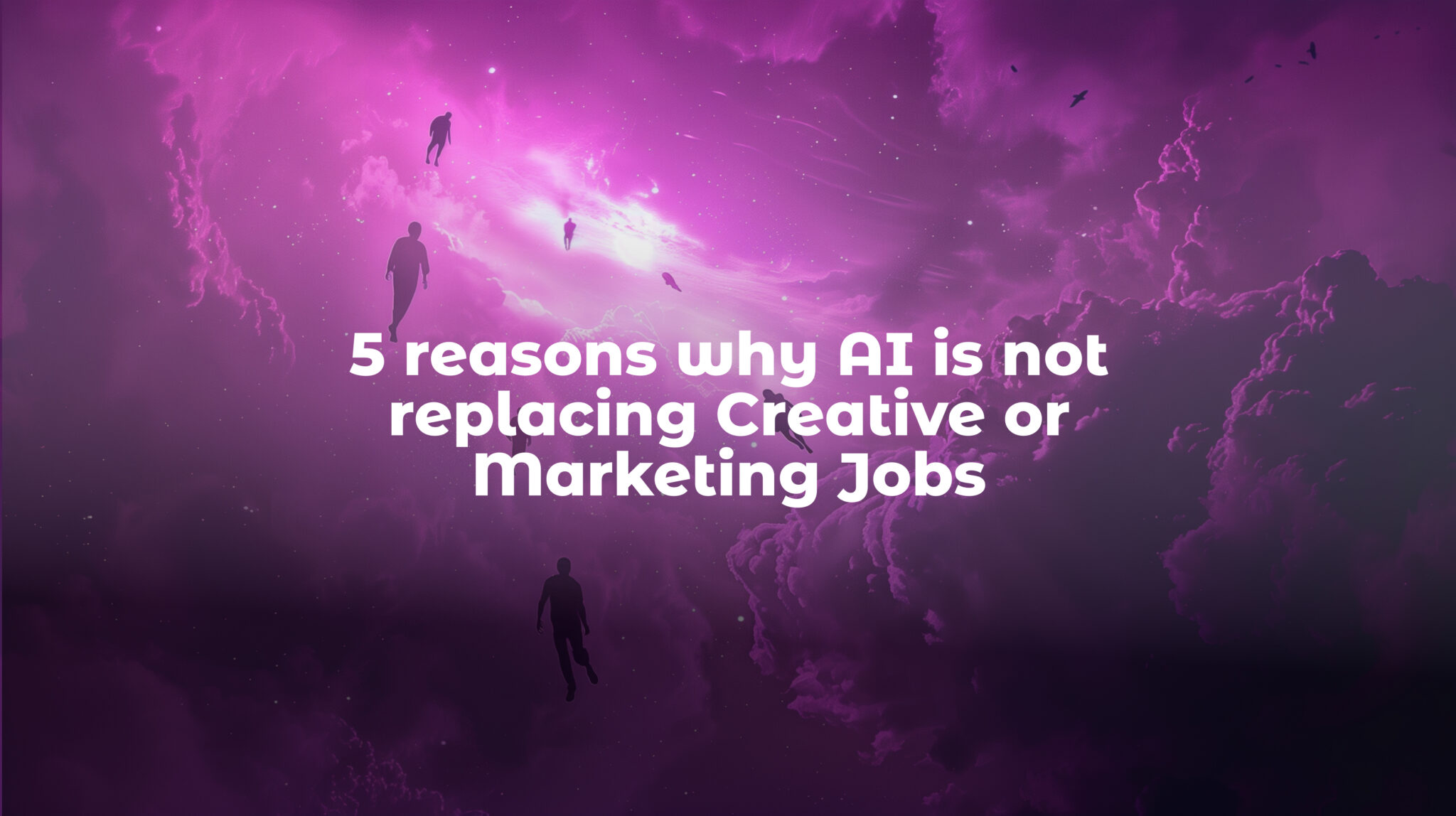If you work in Marketing, the chances are you’ve spent some time already googling questions about AI-generated art and copyright. Can your brand use it? Is it legal? Ethical? And you’ve probably found yourself sifting through a digital haystack of about 100 contradictory articles, yet arriving at no definitive answer. Be reassured: that’s normal, because the landscape of AI art is as gray as a Paris sky in February.
At Metodas, we recently dipped our toes into these murky waters by featuring AI-generated art in most of our communication. This move ignited a spark with some of our contacts, with some accepting our innovative spirit while others fretted over the potential legal pitfalls. Buckle up as we take you on a journey through this legal jungle, decrypting the key points to consider for brands that are thinking about taking a similar leap of faith.

Not another Metaverse hype, but an actual revolution that already started
Generative AI is more than just a shiny new toy for marketers—it’s akin to discovering a secret cheat code in the game of content creation.
Brands that would typically fork out thousands of dollars for photoshoots can now turn to AI tools and churn out high-quality images at a fraction of the cost and time. But this isn’t just about aesthetics or keeping up with the Joneses in the digital age—it’s about the potential for significant return on investment. Generative AI can be a game-changer, a disruptive force that redefines how we approach content creation. The legal fog surrounding AI-generated content is what stands between brands and an efficient, cost-effective future of content creation. The potential for ROI is immense, but so is the risk of stepping on legal landmines in the process.


Here’s a case in point: on the left, an image from an actual photoshoot, and on the right, an imitation we created with a single, simple prompt on Midjourney. Days of production, preparation and editing, versus just 1 minute and no food waste. That’s not merely impressive, it’s revolutionary.
Why is the legal aspect of AI-generated art it so complicated?
To truly grasp the complexity of this legal labyrinth, we need to take a closer look at the key legal conundrums that arise when discussing AI-generated art and copyright. These issues are far from trivial and are currently the subject of intense debate among lawyers, artists, and tech companies alike. Here are the main questions keeping these folks up at night:
1. Ambiguity in Intellectual Property Laws
Intellectual property laws around the world were written long before the advent of AI. The legal landscape is still evolving, and court cases are starting to emerge. However, until there are more definitive rulings or new legislation, it’s unclear how these issues will be resolved in the courts.
2. Training Data and Copyright Infringement
Generative AI models are trained on large data sets, often scraped from the internet. This includes images, text, and other types of content that may be copyrighted. The question of whether using this data for training constitutes copyright infringement is a major legal conundrum.
3. Ownership of AI-Generated Works
In the US, works generated solely by a machine cannot be copyright protected. However, if the creator can prove substantial human input, copyright may be possible. This raises questions about who owns the copyright of AI-generated works: the creator of the AI, the operator of the AI, or the individual or company that owns the data used to train the AI.
4. Fair Use Doctrine
The fair use doctrine, particularly in the U.S., allows limited use of copyrighted material without permission from the copyright owner for purposes such as criticism, parody, news reporting, research and scholarship, and teaching. AI tool creators often argue that the training of their software on copyrighted data falls under this doctrine. However, the interpretation of fair use can be subjective and is determined on a case-by-case basis, adding another layer of complexity to the issue.
5. International Legal Differences
The legal landscape for AI-generated art is not uniform across the globe. Different countries have different laws and interpretations when it comes to copyright and intellectual property rights. For instance, the EU and the U.S. have subtly different legal allowances for data scraping. This international disparity makes it even more challenging for brands that operate globally to navigate the legal landscape.
6. Technical Misunderstandings
Lawsuits and legal discussions often contain technical inaccuracies about how AI models work, leading to misunderstandings and misinterpretations. For example, AI art models do not store images but rather mathematical representations of patterns collected from these images. The software does not piece together bits of images in the form of a collage, either, but creates pictures from scratch based on these mathematical representations. These technical nuances can significantly impact legal discussions and rulings.
Legal Conundrums and Case Studies
High-Profile Cases Highlighting Legal Grey Areas
Several high-profile cases highlight the legal grey areas concerning AI and copyright law, underscoring the complex nature of these issues. A recent lawsuit launched by artists Sarah Andersen, Kelly McKernan, and Karla Ortiz against Stability AI and Midjourney, creators of AI art generators Stable Diffusion and Midjourney, and artist portfolio platform DeviantArt, has brought these issues to the forefront. The artists allege that these organizations have infringed the rights of “millions of artists” by training their AI tools on five billion images scraped from the web without the consent of the original artists. The outcome of this case could have a profound impact on how copyright law applies to AI-generated content and the use of existing copyrighted materials to train AI models.
1/ As I learned more about how the deeply exploitative AI media models practices I realized there was no legal precedent to set this right. Let’s change that.
— Karla Ortiz (@kortizart) January 15, 2023
Read more about our class action lawsuit, including how to contact the firm here: https://t.co/yvX4YZMfrG
The TikTok and Bev Standing Case: A Voice Use Controversy
Another notable case involves TikTok and voice actress Bev Standing, who alleged that TikTok was using her voice, which she had previously recorded for a different purpose, without her consent. The issue was eventually resolved when TikTok agreed to an undisclosed settlement and acquired a license to use Standing’s voice.
Brands and AI-Generated Art: The Nestlé Debate
The legality of large brands using AI-generated art is also being questioned. Nestlé, for instance, ventured into the realm of AI art direction, sparking a debate over the ethical and legal implications of such a move. These cases, and others like them, underscore the complex questions being raised about the copyright status of AI-generated works and the use of copyrighted materials in AI training data.
The Evolving Legal Landscape of AI and Copyright Law
The legal landscape surrounding AI and copyright law is still very much a developing area, both in the United States and internationally, and these questions are likely to be the subject of legal scrutiny and debate in the years to come.
Navigating the Legal Minefield: Considerations for Brands when it comes to AI-generated Art
Given the ongoing legal complexities surrounding AI-generated art, it is crucial for brands to navigate this domain with utmost care. Here are some expanded considerations that might help:
1. Use Your Own Copyrighted Work to Train AI
Brands must ensure that the training data utilized by their AI tools are devoid of unlicensed content to the best of their knowledge. This can be a challenging task given the vast amount of data typically required for training AI models.
It would be possible to use the brand’s own copyrighted work as the base of the prompt. This does not eliminates the possibility of the AI using external sources, but it does reduces the possibility of being judged as a copyright violation. This not only reduces the risk of copyright infringement but also ensures that the AI-created content aligns with the brand’s identity and style. Brands with a rich history or a large archive of content would especially benefit from this approach, as they can leverage their existing assets to generate new and innovative pieces of art.
2. Ensure Substantial Human Involvement in AI Creation Process
In the context of copyright laws in the U.S. and Europe, the degree of human involvement can play a significant role in determining whether a work generated by AI can be protected under copyright laws or not. To strengthen their position, brands should ensure that there is a substantial amount of human involvement in the creative process, particularly when it comes to defining prompts, reviewing, and curating the AI-generated content. This could involve human editing, selection of training data, or involvement in other meaningful ways that contribute to the final AI-generated product.
3. Risk Management Strategies for Larger Brands
The size and reach of a brand can significantly influence the level of risk associated with copyright infringement. Emerging brands and small startups may face a lower risk of lawsuits due to their limited audience reach and visibility. However, larger brands with a global presence need to exercise greater caution. Given their high visibility, these brands might be attractive targets for lawsuits, which could lead to significant financial and reputational repercussions. To manage these risks, larger brands should invest in robust legal teams and risk management strategies, with a specific focus on intellectual property rights in the AI domain.
4. Maintain Transparency and Brand Integrity in AI Usage
In the interest of maintaining trust and credibility with their audience, brands should be transparent about their use of AI tools in the creation process. This can be achieved by openly crediting the AI tool in the final product or by communicating their AI usage in marketing and promotional materials. This level of transparency can go a long way in fostering goodwill and protecting the brand’s reputation. In our case, we made sure the tool we use for animating the fake faces was highly visible through the entire video and the fact that it is AI generated is mentioned in all text captions that go with the video.
5. Creating Proprietary AI Tools
For brands with the necessary resources, creating their own AI tools trained exclusively on their copyrighted images could be a viable strategy. This approach ensures complete control over the training data and eliminates the risk of copyright infringement from external sources. Additionally, it allows the AI to be finely tuned to the brand’s unique style and aesthetic. However, this strategy requires significant investment in AI development and maintenance, and may not be feasible for all brands. It’s also worth noting that while this approach mitigates copyright risks, it doesn’t completely eliminate other legal complexities associated with AI-generated art.
6. Stay Updated with Legal Developments in AI
The legal landscape surrounding AI-generated art is rapidly evolving. Corporations should closely monitor legal developments, court cases, and regulatory changes in this area. This can help them stay ahead of the curve, adapt their strategies accordingly, and mitigate legal risks.
A Balanced Approach to AI-Generated Art
Embracing the Potential of Generative AI
As a marketing network, Metodas recognizes the immense potential of generative AI in revolutionizing the creative process. We’ve seen firsthand how it can enhance our own promotional efforts, offering a level of efficiency and innovation that was previously unattainable.
Navigating the Complex Ethical and Legal Landscape
However, we’re also acutely aware of the complex ethical and legal landscape that surrounds this technology. Each brand has its unique vision, values, and tolerance for risk. We respect these differences and work with our clients on a case-by-case basis, tailoring our strategies to align with their specific needs and objectives.
Understanding the Intricacies of Corporate Adoption
We understand the intricate politics and processes within large corporations. Adopting new technologies is not a decision to be taken lightly. It requires careful consideration, thorough risk assessment, and often, a significant cultural shift.
Our Commitment to Responsible Innovation
At Metodas, we’re committed to navigating the complexities of AI-generated art, helping our clients make informed decisions. We believe in the transformative power of AI, but we also believe in responsible innovation. As we continue to explore the possibilities of AI-generated art, we remain dedicated to serving our clients with integrity, expertise, and a deep respect for the challenges and opportunities that this new frontier presents.






